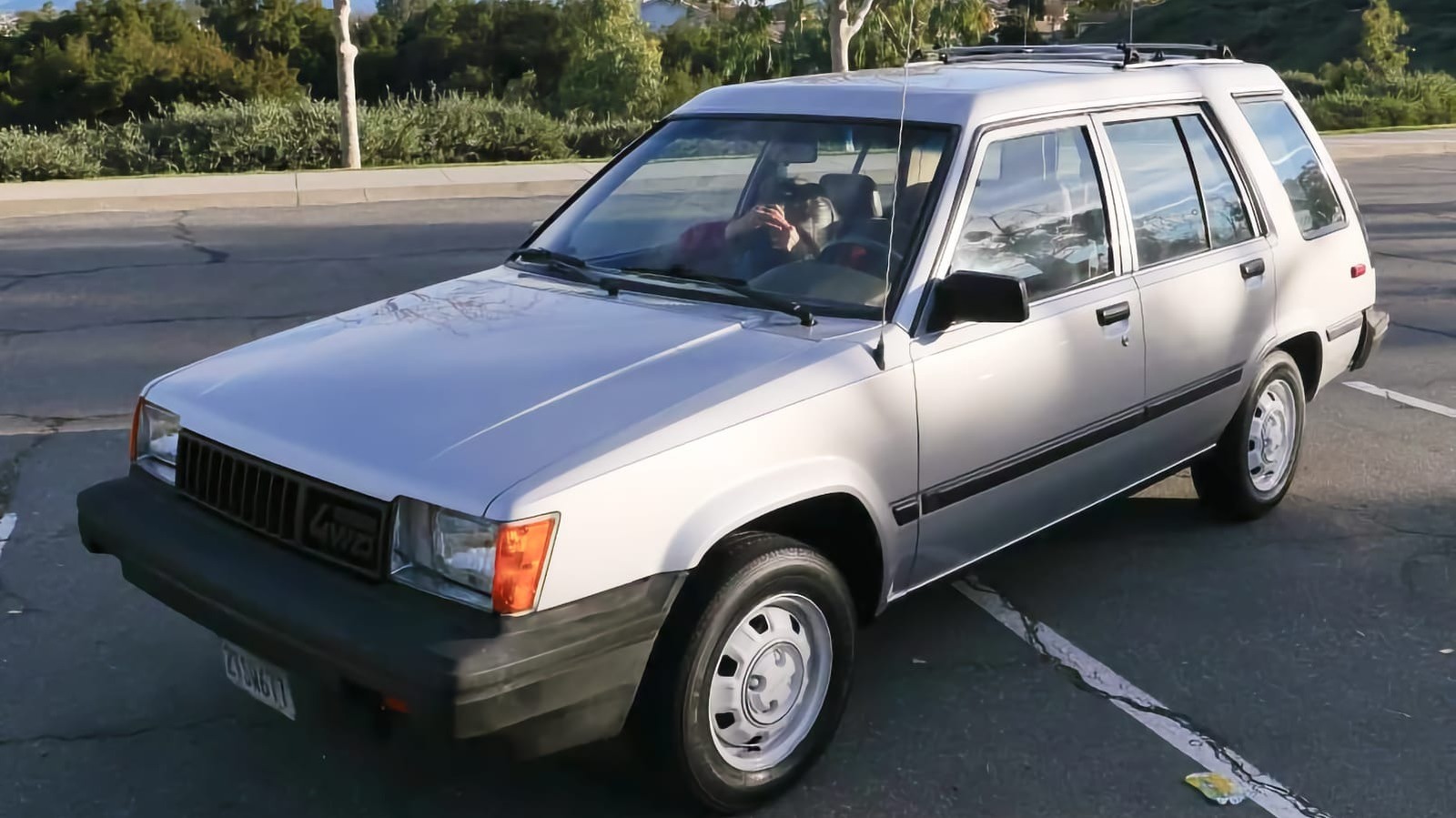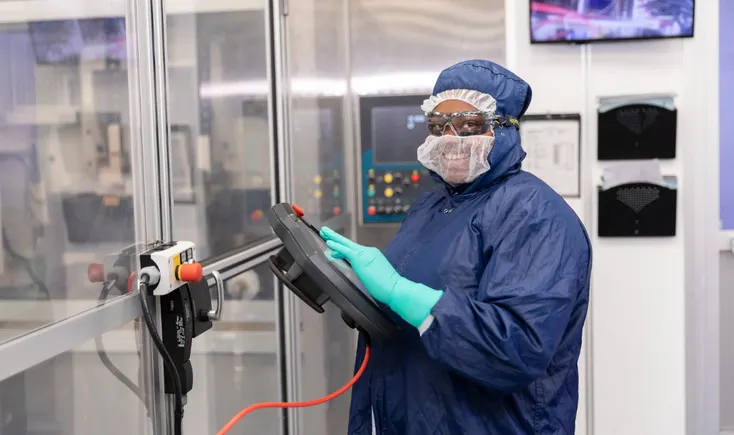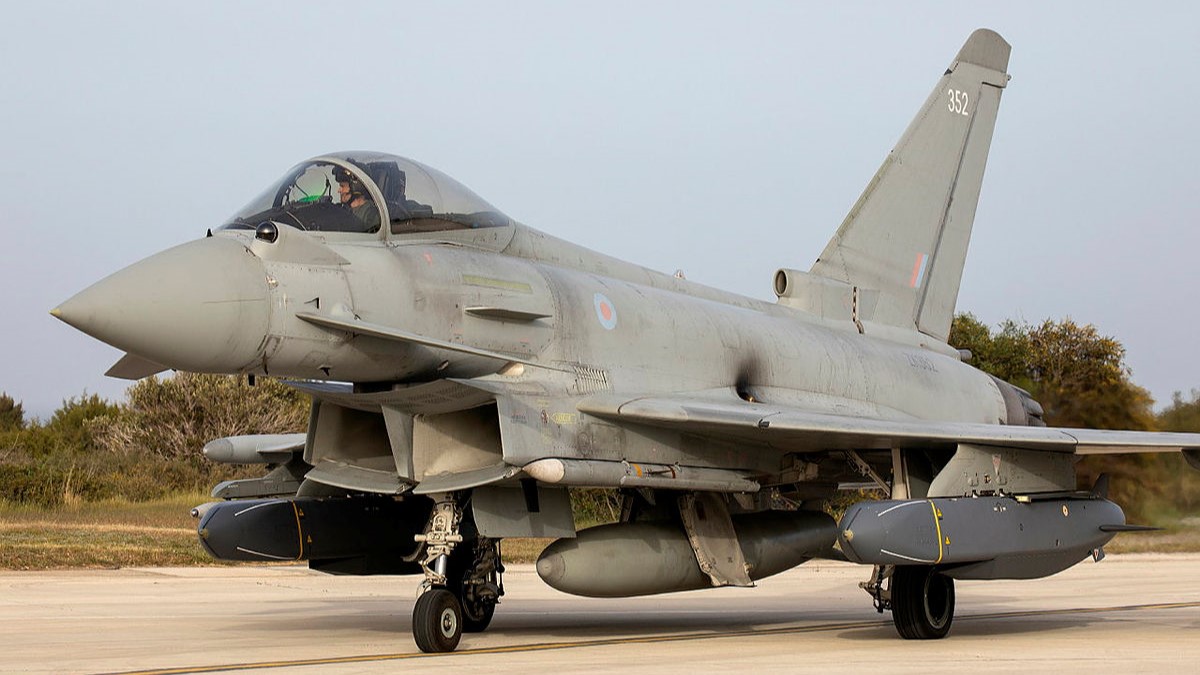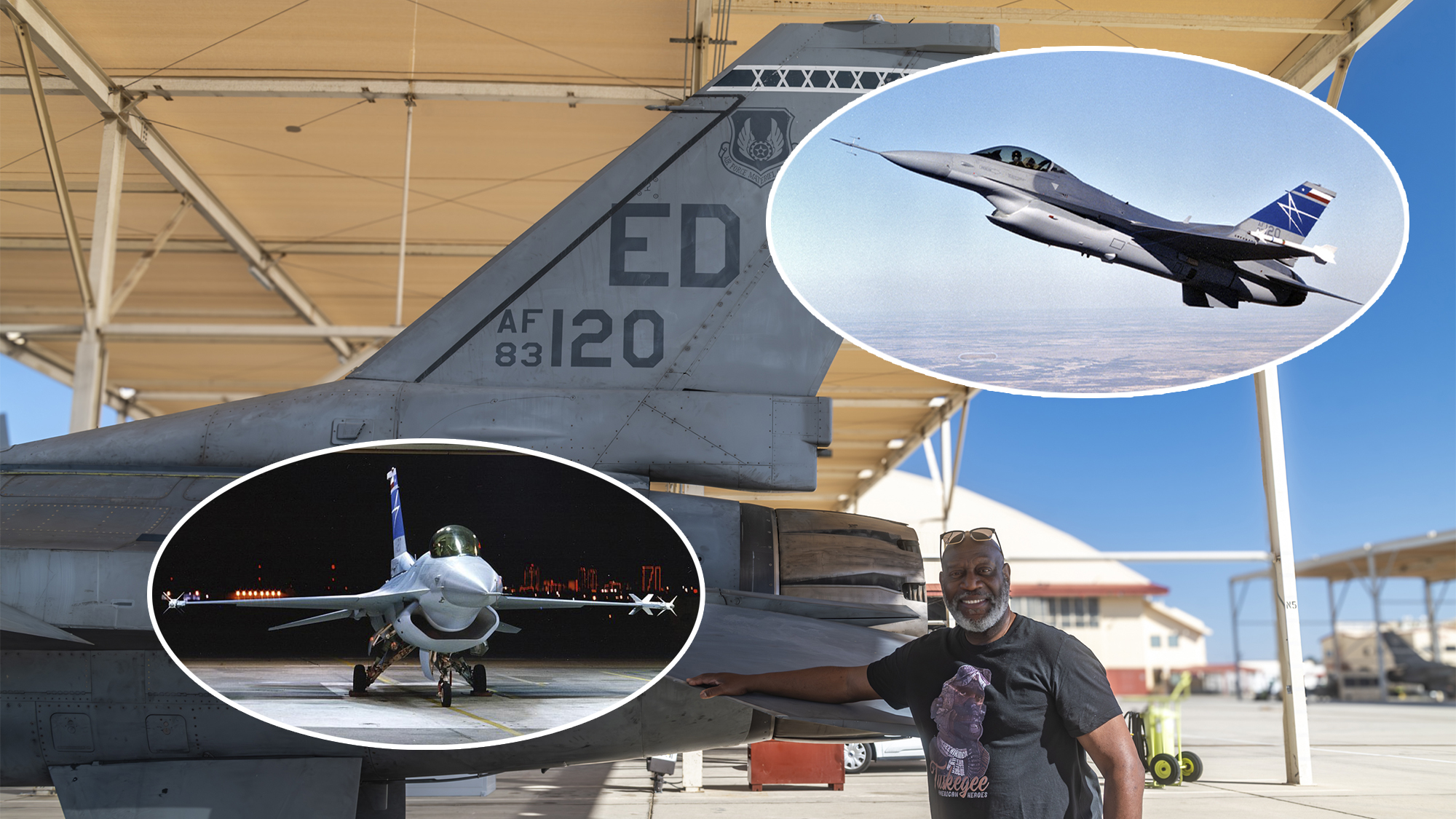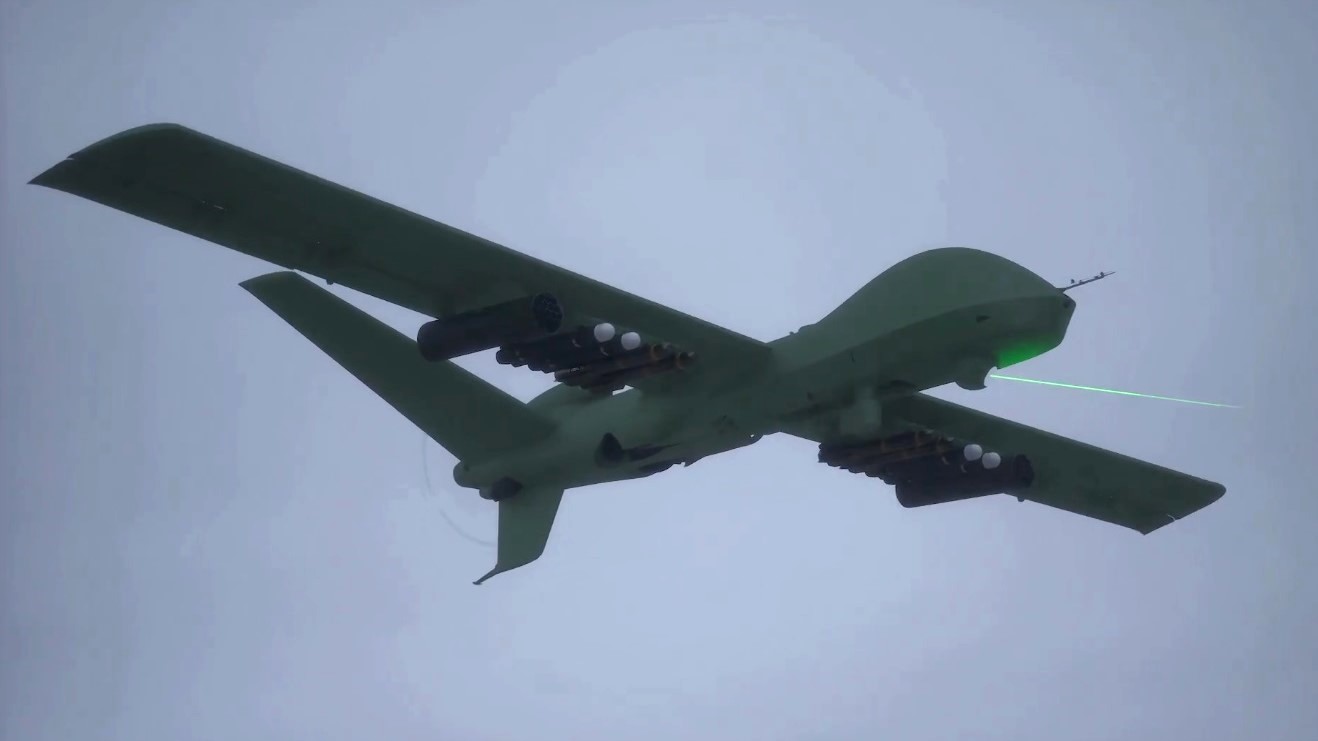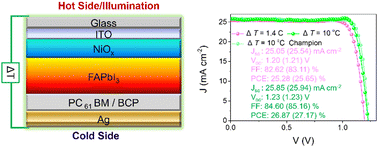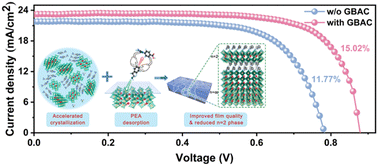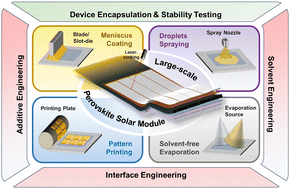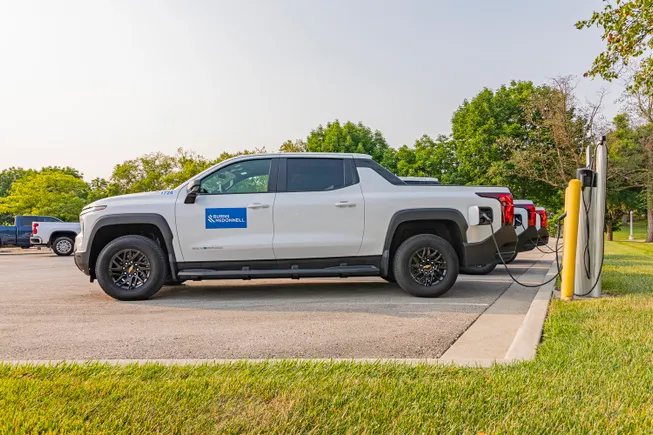Missile Defense Agency takes delivery of first THAAD radar to track hypersonics
The upgraded AN/TPY-2 radar uses a Gallium Nitride semiconductor that allows it a longer range, enabling an interceptor to launch early enough to hit a hypersonic missile before its starts maneuvering, according to the company.


An upgraded version of the AN/TPY-2 radar. (Photo credit: RTX)
WASHINGTON — Raytheon has delivered the first upgraded radar for the Terminal High Altitude Area Defense (THAAD) capable of tracking hypersonic missiles to the Missile Defense Agency, the company announced today.
The new version of AN/TPY-2 has a longer range and can provide targeting coordinates to other missile defense interceptors beyond just the Army’s THAAD batteries, Jon Norman, Raytheon’s vice president for Air and Space Defense Systems Requirements and Capabilities, told Breaking Defense.
“What the TPY-2 does now, with the Gallium Nitride front-end in it, is it can see things twice as far, so we can make that command and control decision a lot earlier on which effector to use, whether it’s an SM series or it’s a Patriot, or it’s a THAAD,” he said.
The radar can be deployed as a standalone, mobile unit rather than being directly wired into a THAAD battery, Norman explained, which positions it as a potential contribution to President Donald Trump’s Golden Dome plan to create a comprehensive missile shield for the US homeland.
Gallium Nitride, known as GaN, “is a glasslike material that offers key advantages over other radio frequency semiconductors in energy efficiency, weight and power output,” according to an earlier Raytheon press release. It “provides greater sensitivity to increase range, expands surveillance capacity and supports the hypersonic defense mission.”
Today’s announcement noted that the upgraded AN/TPY-2 (pronounced tippy-two) also sports new “CX6 high-performance computing software that offers more precise target discrimination and electronic attack protection.”
Norman explained that the combination of greater range and better discrimination makes the upgraded radar optimal for finding and tracking hypersonic missiles. Hypersonic missiles, while flying at about the same speed as a ballistic missile, are able to maneuver in flight, whereas ballistic missiles follow a predictable trajectory. They also are smaller and have a lower radar cross section than a ballistic missile, meaning they are harder to see and, therefore, intercept.
The upgraded AN/TPY-2 can now “detect these very, very small targets, and you can detect them at the separation when the booster separates from the warhead,” he said, adding that with the longer range “we can shoot sooner, and we can hit it before it starts maneuvering.”
Norman said that the improved discrimination capability also helps in ensuring that an interceptor can keep tabs on the actual missile and not get confused by chaff or even other random objects in the air.
“If they have anything else falling off, you can discriminate very accurately and say, ‘This is the warhead. This is what we need to shoot. All the other stuff is just junk. It’s like litter on the road, so don’t waste the missile on the junk. Hit the thing that we want to hit,” he said.
The new delivery is the 13th AN/TPY-2 for the MDA, but the first with the new GaN array, Norman said.
Saudi Arabia pioneered the upgrade program, with Raytheon delivering the first of its kind GaN-equipped AN/TPY-2 to the kingdom last September.
(Interestingly, Trump announced on Thursday that RTX had inked a memorandum of understanding with Emirates Global Aluminum (EGA) to explore producing gallium with Saudi Arabia’s neighbor, the United Arab Emirates.)
While Raytheon was awarded the original contract from MDA to upgrade the AN/TPY-2 with GaN chips in 2016, Norman explained that the company worked with all its foreign partners, as well as MDA and the US Army, to fund the upgrade. Although he did not name the partners beyond Saudi Arabia, the US has deployed earlier versions of the AN/TPY-2 in Japan and South Korea.
“Instead of this all being a US bill for the modernization, we can reach across all the customers, and they all contribute a bit, and that provides new capability to the US Army, and it provides new capability to our foreign partners,” he said.
According to MDA’s fiscal 2025 budget request, the agency asked for slightly more than $8 million “for the induction of a thirteenth AN/TPY-2 THAAD configured radar into operations and sustainment at a fixed site to operate continuously 24 hours a day, seven days a week, 365 days a year, requiring supply support, repair, maintenance, transportation, parts, storage, special tools and test equipment, recurring and delta training, technical interface, training device maintenance, and engineering support.”
The agency further asked for an increase of nearly $29 million in its Missile Defense Radars budget line to provide “continued and accelerated acquisition of Gallium Nitride (GaN) Transmit Receive Integrated Microwave Modules (TRIMM) components (@~3,200/radar) to support the modernization of the AN/TPY-2 radar fleet to replace obsolete Gallium Arsenide (GaAs) TRIMM inventory, incorporate server updates, and enhance radar capabilities.”































